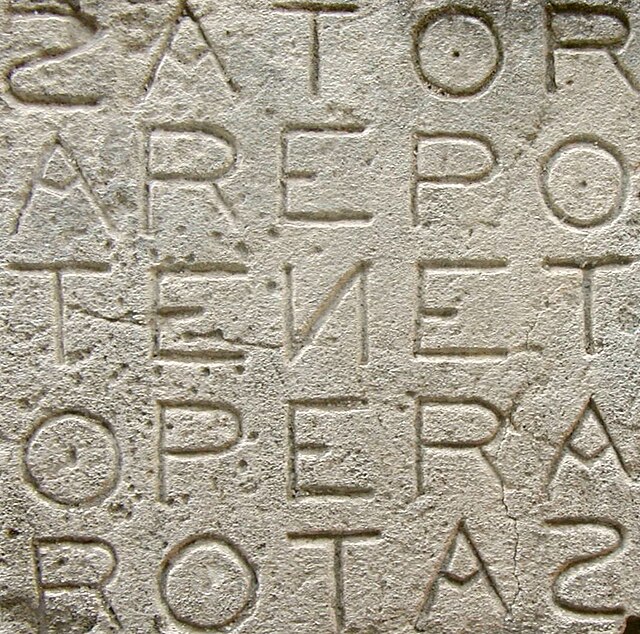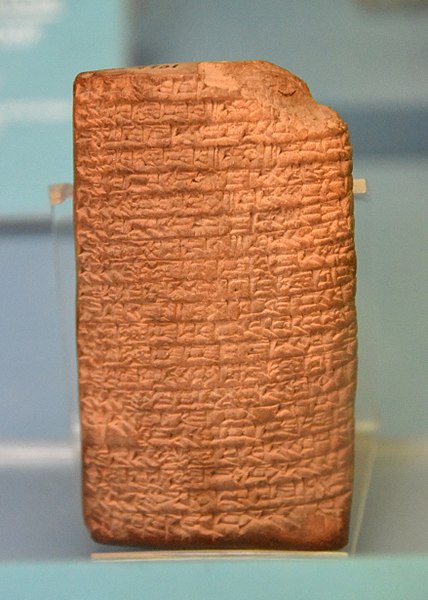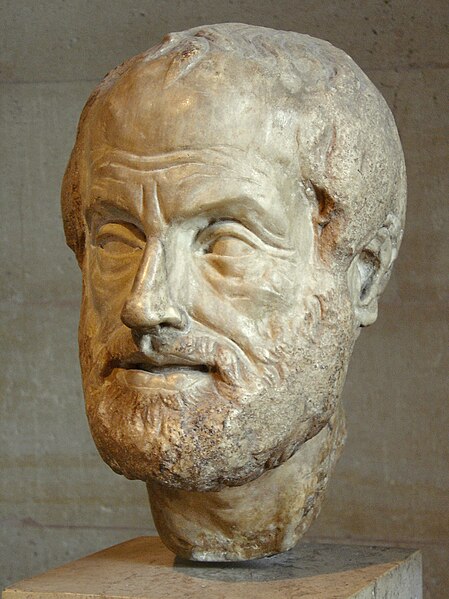An acrostic is a poem or other word composition in which the first letter of each new line spells out a word, message or the alphabet. The term comes from the French acrostiche from post-classical Latin acrostichis, from Koine Greek ἀκροστιχίς, from Ancient Greek ἄκρος "highest, topmost" and στίχος "verse". As a form of constrained writing, an acrostic can be used as a mnemonic device to aid memory retrieval. When the last letter of each new line forms a word it is called a telestich; the combination of an acrostic and a telestich in the same composition is called a double acrostic.
Acrostic poem on a tombstone in Kilfane Church, Ireland.
A Sator square (in SATOR-form), on a wall in the medieval fortress town of Oppède-le-Vieux, France
Image: Triple Acrostic by Thomas Browne
Poetry, also called verse, is a form of literature that uses aesthetic and often rhythmic qualities of language − such as phonaesthetics, sound symbolism, and metre − to evoke meanings in addition to, or in place of, a prosaic ostensible meaning. A poem is a literary composition, written by a poet, using this principle.
The oldest known love poem. Sumerian terracotta tablet#2461 from Nippur, Iraq. Ur III period, 2037–2029 BCE. Ancient Orient Museum, Istanbul
The philosopher Confucius was influential in the developed approach to poetry and ancient music theory.
An early Chinese poetics, the Kǒngzǐ Shīlùn (孔子詩論), discussing the Shijing (Classic of Poetry)
Aristotle







